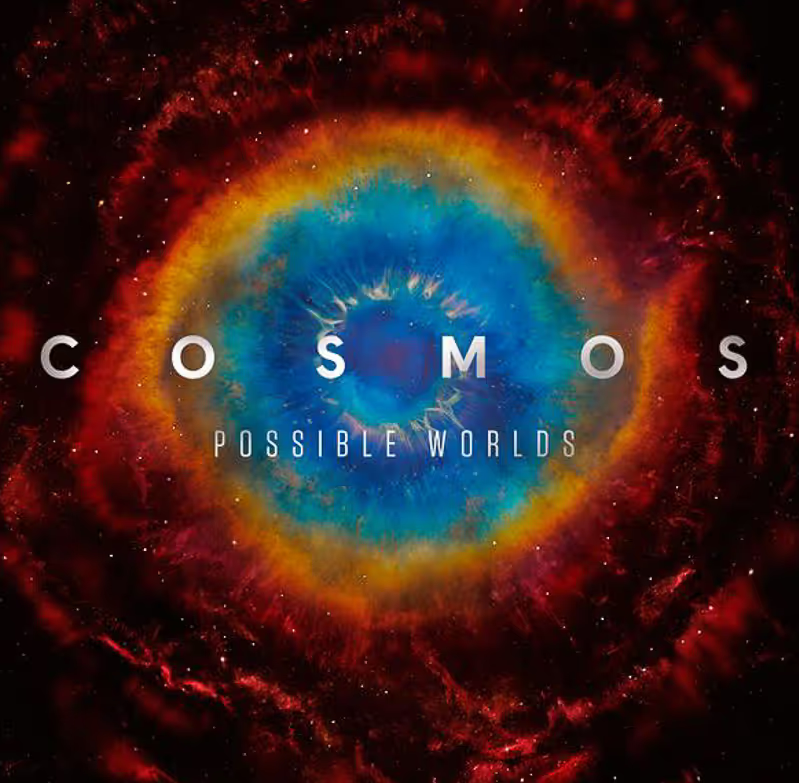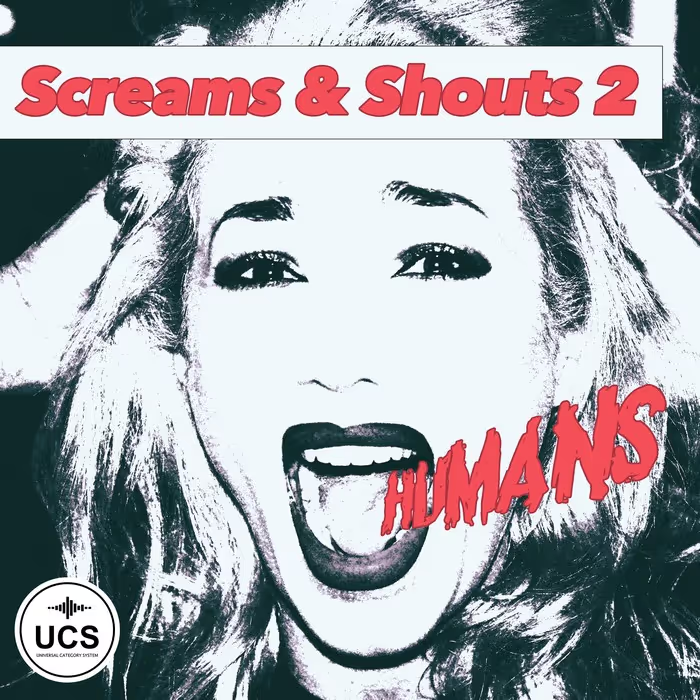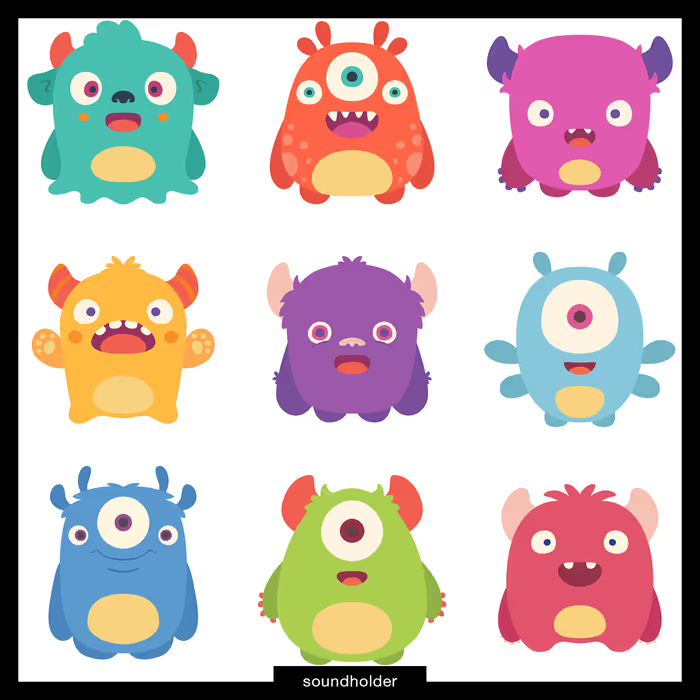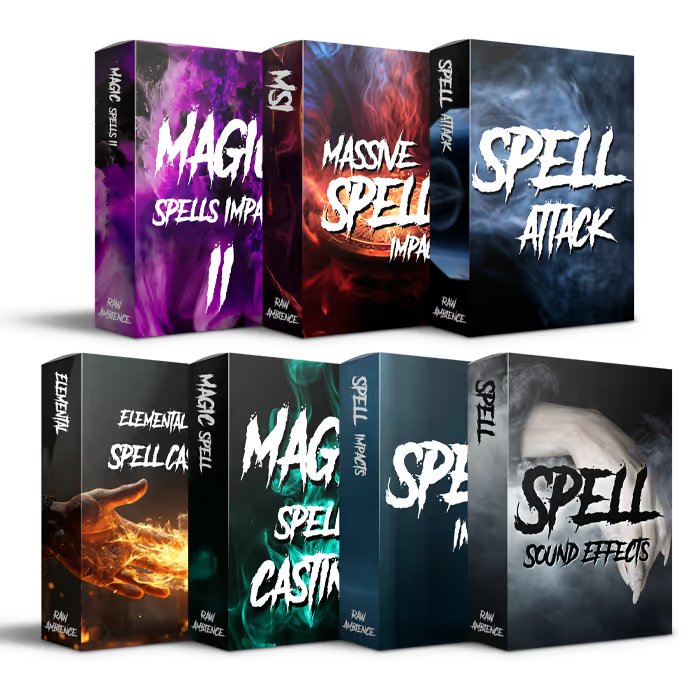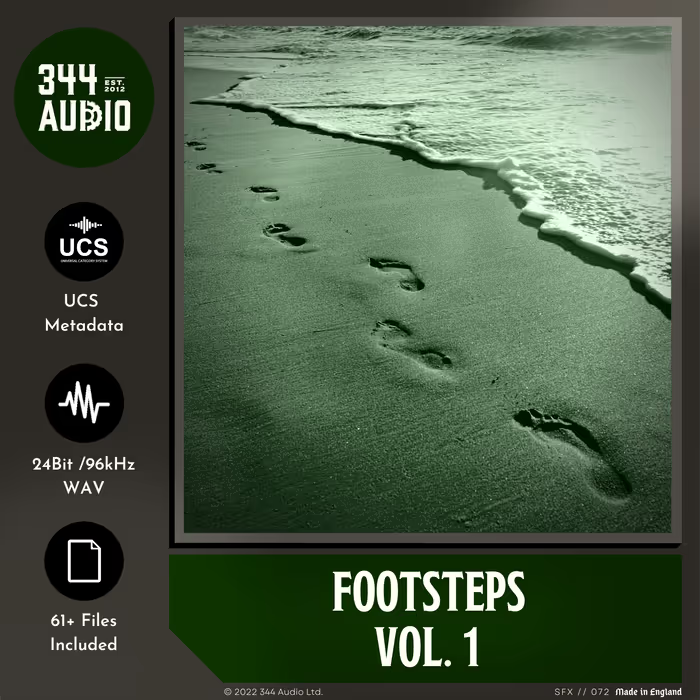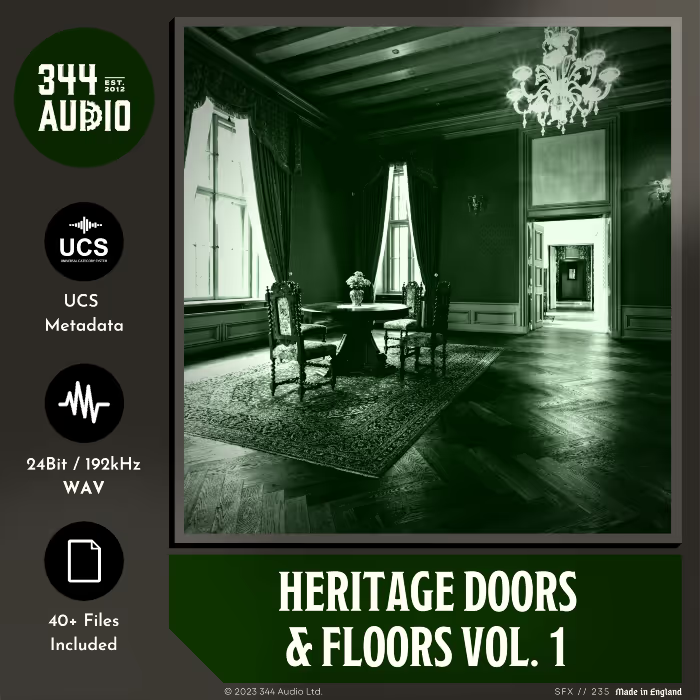Space may seem like a cold and distant place, but Executive Producer/Creator Ann Druyan spoke of it in emotional terms when collaborating with King Soundworks‘ supervising sound editor Greg King and sound designer Jonathan Greasley on Nat Geo’s Cosmos: Possible Worlds.
The interconnection of all matter, be it across the galaxy or across time, has strong connotations throughout the series. This living connection required an organic approach to the sound, and not just in terms of creation. There’s an ebb and flow of effects, music, and dialogue in the final mix that lends a natural rhythm to each episode. King and Greasley — who both mixed the show — were allowed to be improvisational on the dub stage, to feel the flow of sound and move the soundtrack in that direction. The sound for Cosmos: Possible Worlds wasn’t so much built as it was grown.
Here, King and Greasley talk about that organic approach, how the late VFX actually encouraged creativity, how they brought the music and effects together, and their favorite moments of designing the macro of space, the micro of biology, and the expanse of time.
The Cosmic Connectome | Cosmos: Possible Worlds
For Cosmos: Possible Worlds, you created organic, realistic sounds that were also based on imagination. Can you tell me about that process? Aesthetically, how did you hone in on what that should sound like?
Greg King (GK): We first met with Executive Producer and creator Ann Druyan, who was also one of the writers on the show and directed several of the episodes. Ann is Carl Sagan’s widow so this is a family project, to tell you the truth. It was a very big deal for her. She writes books about the cosmos and produced the last Cosmos series. She was involved with NASA’s Voyager mission and put together the sounds for the Voyager’s Golden Record that went into space.
When we first met with Ann and the other writer/director/executive producer Brannon Braga, Ann spoke to us on an emotional level. She didn’t reference anything in particular. She approached it story-wise, from the interconnectedness of us on a cellular level to a world level to a societal level to how that encapsulates all into space.
Once we heard her speaking about the project and how invested she was in it, at that point we pretty much decided that this has to feel organic. Even though the visuals look very science fiction, it’s actually real. It’s actually our universe and our cosmos — both here on earth and in outer space. We made the decision that we didn’t want anything to sound artificial or like science fiction. It all had to sound like it was coming from the earth. Real sounds that we are familiar with resonate with us all on an emotional level. So we decided to start with real sounds as our springboard, even if it’s just a seed of the sound. That’s where we wanted to start from. Our conversation about organic and real sounds started with Ann and her approach that was coming from such an emotional place.
Did you go out into nature and capture recordings, to find that connection with the earth and organic materials? Or did you start with library sounds?
Jonathan Greasley (JG): It was a combination of capturing custom recordings and pulling pre-recorded sounds. We have an insanely expansive library at this point that’s a collection of material from everyone at King Soundworks now, and from Greg’s recordings that started back when he started the Sounddogs sound library website with his partner at the time, Rob Nokes.
Our sound library is so extensive, not only in terms of size and the amount of sounds we have, but also in terms of the amount of experience and man hours, and blood, sweat, and tears that’s gone into making it. So we pulled from that because it’s obviously a great resource. But it’s always good to have something that is completely custom for the project that you are working on. That might be a new recording or something new that was created from our resources that we pulled from.
One of the things we wanted to do, as Greg said, was to make this show sound as organic as possible. One way to do that is to start with a recording of something rather than synthesizing a sound. There are a lot of times when you can use soft synths and hardware synths to generate something because they are easy to manipulate. But those tend to sound inorganic. So we tried to start with an acoustic instrument as the base sound and we’d then manipulate that into something that was otherworldly or cosmic. That grounds the sound in reality because it starts with a realistic sound. It’s an actual recording of an actual thing. It was very important for us not to go all synthy. That wasn’t the right direction for this project. We have worked on science fiction shows where the sounds for a space ship were created from one synth and that worked for that project. But for Cosmos: Possible Worlds, it needed to be organic recordings from our library and new organic recordings. Even for the more abstract concepts, it was important to start with organic sounds.

With some plug-ins — take Cycling 74/Pluggo’s Squirrel Parade, for instance — you have the ability to push an organic sound far into the synthesized realm. What was your degree of manipulation? Did you have a limit on how far you’d go?
JG: The more you process something, the more inorganic it does start to sound. Once you start to get digital artifacts, it’s really obvious. Even to an untrained ear, you can just sense that it doesn’t sound organic anymore. So, we tried to do minimal processing or simply process the sounds using pitch and time manipulation, and reverb. That is processing that can happen in the analog realm. Reverb is all around us all the time. Slowing down and speeding up sounds goes back to the roots of sound design when everything was on tape. If we stayed with the time and reflection-based processes — pitch, reverb, delay, etc. — then it tended to stay organic sounding. Once you get into flangers and phasers and things like that, it gets very “sound effecty” quickly.
GK: We used a lot of layering too. Layering multiple organic sounds together gives you a brand-new sound. Some of our source inspiration was the Voyager’s Golden Record. That had a variety of various earth sounds, including recordings of Ann’s brainwaves while she was thinking about being in love and things like that.
If we stayed with the time and reflection-based processes — pitch, reverb, delay, etc. — then it tended to stay organic sounding.
There were recordings of pulsars. When we investigated that, we found that NASA had an archive of sounds from space that they’ve accumulated over the years. They aren’t actual recordings of space; they’re radio waves. Whether they’re acoustic radio waves that we can hear or they’re radiation or light waves transcoded into sound. We didn’t use those sounds directly, but rather used them as a reference for rhythm and pitch and frequencies.
We started to notice that there is a throughline as you go from earthly sounds to sounds that are randomly picked up in space. There is a lot in common between those space sounds and what we have here on earth. So we would incorporate those ideas into our sound design.
It’s not about the sound or the processing; it came down to this overall message of how we’re interconnected, how cells communicate within our body and how we as organisms communicate with each other and how we communicate with nature around us. That extends to the solar system and the galaxy and the universe. So that became one of our main sound design themes — to hone in on these rhythms and pulses and these dynamics that became an integral part of the sound design.

Another interesting aspect of this series is how it conveys the concept of time. The show spans a period from 14 billion years ago to 14 billion years in the future. That’s quite a range! What were some guiding principles for your ‘sonic evolution?’ How did you make each chunk of time feel distinct yet connected?
GK: That relates back to the rhythm of organic things we were talking about. We wanted to find that throughline thread. To differentiate the various areas, or even the different levels if you want to get down to a quantum level to a macro-universal level, we tried to do that by trying to keep some of those rhythms intact but then we’d play with layering and pitching.
…the rhythm isn’t limited to a specific meter that sounds like a beat. It’s more like a subconscious rhythm that doesn’t have to be a steady tempo.
JG: One of the things they did to display that range of time was to chunk it out in a cosmic calendar that Neil deGrasse is standing on. There’s that visual representation of all the time we’re able to measure condensed down into 12 calendar months. So, he walks around on that, starting with the Big Bang and of course you have to do something big and flashy when he talks about that and you see it. It comes up to the present day, right before midnight on December 31st. As he’s moving around that cosmic calendar, we have to track and follow what he’s talking about and what’s being represented by the visual effects.
Again, the sound needed to be organic all the way through. And the rhythm isn’t limited to a specific meter that sounds like a beat. It’s more like a subconscious rhythm that doesn’t have to be a steady tempo. It’s more like an ebb and flow. It’s not a consistent pulse. It’s a more natural flow that doesn’t feel jarring, even if it’s speeding up or slowing down. It doesn’t pull you away. It’s almost like if you don’t perceive it then the effect is better.

There is a significant amount of VFX in this show. How did that impact your workflow?
GK: We had very little VFX to work with initially. The first cuts we got at the beginning of our process were just Neil walking around in a green room. He’d hold up his hand and there would be a grip there pointing a flashlight at his hand to make his hand glow. That would later be filled with an image of Saturn or a galaxy in his hand. A lot of that was left to the imagination.
The more complex effects of planets colliding or black holes spinning around or the mycelium of under the ground were, in some cases, storyboard drawings. Although that may sound like it was a hindrance to the sound design workflow, it actually ended up becoming a benefit.
…by not having things so rigidly planned, we were able to be improvisational with the mix. It was the most improvisational mix that I’ve ever been involved with…
It got to a point where we were getting these VFX at the last minute — either days before the mix or the day of the mix. Because we had worked with Ann and Brannon on the first episode, they really got into what we were doing and where we were going with the sound, so they basically gave us carte blanche. We knew what they were looking for and they let us go for it.
By getting these VFX at the last minute, it put Jon and me into improvisational mode. We’re mixing and we’re seeing these VFX almost in this relay fashion, with no time to waste. It forced us to look at the whole episode and redo things based on what we were seeing visually. We had our initial sound design and we had the musical score by Alan Silvestri and we had the narration. The latest VFX inspired us to look at the episode as a whole.
So, by not having things so rigidly planned, we were able to be improvisational with the mix. It was the most improvisational mix that I’ve ever been involved with in my 30 years of doing this work. We were really designing and mixing and making creative decisions in the moment in the mix and that ended up giving us a much more fluid and freer sound for the overall show. I think it worked out for the best.
JG: Having the rough conceptual VFX and not seeing the final visuals until later in the process allowed us to describe the sound based on the overall concept of the thing rather than trying to make it sound how it looked. Then you end up with a sound palette that’s based more on the concept. As the visuals develop, then you can tweak and refine the sound. That allowed us to come up with sounds based purely on the idea as opposed to cutting a sound to a specific visual.

Maybe that’s why the relationship between the music and effects feels so cohesive. There’s a lovely balance between the two…
JG: Everything has to have its moment. As Greg was saying earlier, the whole thing has this ebb and flow. There’s a dance between the elements, which is almost like an analogy of the cosmic dances of these celestial bodies and even the elements on a micro level. Everything is harmoniously moving, ebbing and flowing, and the sound of the show had to do the exact same thing. It’s not all about the music or all about the sound design. You have to move it all around — even the narration at times — to get that flow. And it has to happen in a way that you don’t notice. It just has to feel right.

Let’s look at some of the specific effects you created, like that dance between the two black holes. How did you make the sound for that event?
JG: The bulk of that idea came from Mike McKone, who is a fantastic sound designer. But the tricky part about that sequence is that it’s such a massive conceptual thing and also the size of the event is unfathomable. The trick on that one was trying to convey the absolute, unbelievable scale of the thing that you’re looking at on the screen. A black hole is one of those things that’s a bit beyond the realm of what the human mind can conceive, to think about how absolutely massive that would really be.
To help convey the concept of the visuals we’re looking at, you can’t use high, wispy whooshes. It’s easy to convey motion with whooshes and high, piercing sounds. But we couldn’t use those because it would take away from the scale and the magnitude of those things. Keeping the weight and the scale of the event but also giving it energy and movement was the biggest challenge.
A black hole is one of those things that’s a bit beyond the realm of what the human mind can conceive, to think about how absolutely massive that would really be.
We started off with a lot of low, steady drones, tones, and hums that had a good weight and heft to them. The main sounds are bass guitar played with an eBow, which is an electronic device that simulates the way a horsehair bow vibrates the strings on a cello or violin, except since it’s electronic, it just goes forever. So you get these really long, steady tones that you can modulate either as you’re generating them, or after the fact in the editing stage. Then we used manipulation to add the rises and falls and movement of the black holes spinning around each other getting quicker and quicker — all without letting the sound get too thin. Mike used Native Instruments Reaktor for processing the raw sounds. It was an exercise in making those steady-state sounds rise and fall and move. And the other main element is thunder run through a comb filter for some of the accents, stuff with a little more inherent transient impact to add texture to the drones.
[tweet_box]Creating the Grand Sound of ‘Cosmos: Possible Worlds'[/tweet_box]
When dealing with low-frequency sounds, the mix can get muddy fast. How did you craft some clarity into that?
JG: One thing we never want to do — either when mixing for television or a feature film — is to lean too heavily on the sub. You might do something with a ton of low-end on the dub stage and think it sounds absolutely fantastic but then when someone watches it on their iPad or what have you, then they’re not going to get the same effect.
There was an awful lot of carving, and not just with the sound design elements. We needed to make sure the music had space to breathe.
We always do a pass on small, five-inch speakers in stereo to make sure that everything sounds big and punchy there. Then you know it’s going to translate to bigger and more capable sound systems. So it’s a lot of low-end but you never want to rely on frequencies below 100 Hz. The low-mids are very important but that’s where you get the mud. You want to be careful not to pile up sounds in the 200 Hz – 500 Hz band, because that’s going to get very mushy very quickly.
There was an awful lot of carving, and not just with the sound design elements. We needed to make sure the music had space to breathe. There might be an element in the music that we had pulled back here and there to let other things pop through. And of course, Neil is almost always narrating and we have to make sure his voice cuts through the whole thing.
So we did multiple, meticulous passes. I can’t stress enough the importance of doing a pass on the small speakers because that’s how a lot of people are going to hear it.

In addition to the black hole event, were there any other moments for sound that you were really proud of in the series?
GK: That’s a tough one because there are so many cool moments. Overall, I’m most proud of how the episodes all connect. Even though we didn’t have all of the episodes at the beginning, we did manage to keep a cohesive feel for all the different subject matters addressed in the different episodes. We were able to keep the series sounding very consistent. There is a throughline from one episode to the next, and within each episode. You’re not hearing something completely foreign when you go from a microscopic, atomic level all the way up to a macro, universal level. There’s a consistency in the sound design where it feels like it’s all coming from the same source; it’s all the same universe. It isn’t a jumble of a bunch of different sound design concepts. When I look at the whole series, I’m proud that we were able to do that, to tell the story from episode one to the last episode, and have it all stick.
On an episode level, I do have a couple favorite moments. There was a scene where you see the ripping and the tearing of the moons. We discovered that on a lot of these moons, under the ice crust surface, there is water. I thought there were some really nice moments for sound in there.
That’s a great example of improvisation on the stage because we had only animatics of the bee visuals. It was hand-drawn line drawings initially.
I really liked the episode about the bees. We learn how bees communicate and that they aren’t just randomly flying around bumping into things. They can give exact coordinates to their other hive mates through a series of wiggles and wags and buzzes. We took our bee sounds and manipulated them to make it sound like a distinct language for when the bees are going and waggling and buzzing and circling. We took those rhythms and pitches and used that exact same kind of thing for our alien communication. So when you hear the alien communication and you hear the bees they don’t sound the same but they are connected by the same rhythms. You get the feeling that we’re all communicating on the same kind of level. Overall, that was my favorite. That’s the stuff that got me really excited and are my favorite kind of moments.

JG: For the bees, they do this waggle dance to communicate distance, time, latitude and longitude to each other. We had a visual of these animated bees that are communicating through this dance they are doing. We took the main layer — this steady sound of a bee buzz — and manipulated that, just like we did for the black holes. You can manipulate a steady sound to give it movement and make it do what you need it to. Then, in Pro Tools, I used the pen tool in a saw-tooth shape to draw a zig-zag line in the volume automation. That created this choppy rhythmic element of the bee waggle. So as you watch them, you’re hearing the bees do this ziz-ziz-ziz-ziz sound.
Later in the show, there’s this giant satellite dish that’s picking up measurements and radio frequencies from out in the universe. The satellite finds a message out there and it could potentially be communication from a distant lifeform. We use the same effect with different sounds so you can recognize that the alien communication isn’t the same sound that the bees make, but it’s the same type of communication that the bees use. That was a cool throughline that worked really well.
GK: That’s a great example of improvisation on the stage because we had only animatics of the bee visuals. It was hand-drawn line drawings initially. It wasn’t until we were on the mix stage that we started to get these great visuals of the bees in their hives. Once we saw the VFX, we could then finalize the concept.
JG: My other favorite moment that blew my mind — it’s great to work on a show where you learn so much — was all about photons and the relationship between their two halves when they split apart. Basically, if a photon splits into two parts, those parts will have the same spin no matter how far apart they get from each other. And they measured this down to the smallest possible level that we can measure. If the split photons do get out of sync with each other, they both instantaneously know they’re out of sync, no matter how far apart they are.
You can hear this nice, harmonious major third as they spin in sync. But when their spin gets disrupted, we change that to a diminished fifth.
We demonstrated this sonically using harmony and dissonance. We used clean, pure, simple tones, like if you run your finger around the rim of a wine glass that has some water in it. It starts with that very clean, pure tone. We have that diverge into two tones in a major third harmony when the photon splits. You can hear this nice, harmonious major third as they spin in sync. But when their spin gets disrupted, we change that to a diminished fifth. It’s an interval that pulls your ear because it’s obviously dissonant. It’s a cool, subtle effect that you may not necessarily catch on the first pass. But, in the same way that I like records, the more times you listen to them the more things you notice. There are sounds in this show that will stand up to repeat viewings because you’ll learn new things and notice and hear new details on every watch.

Was there an episode that you found challenging as a whole?
GK: All of them!
Quite honestly, it’s hard to pick out one because they all had different design challenges. Some were challenging because of the general scope — you’d have planets colliding or bees communicating or photons splitting. Some were challenging because there weren’t that many visuals and so you had to carry these throughlines of the story with sound and keep something going very subtly in the background to tie Neil’s dialogue together.
The overall challenge for each episode was doing our best job to help tell the story. We found this series to be very important and very timely. We’re in a global political climate where there is a lot of denying or ignoring science and facts and the destruction of the planet because we’re choosing to ignore the damage we’re doing to it.
The challenge was doing justice to the responsibility of the material…
The series shows that we can’t live life like we’re on our own isolated islands. We are not beings unto ourselves. Our survival and our existence are dependent on a lot of things around us. Those are critical to our survival. We found a responsibility to do the sound in a classy, tasteful way to help get this information out to people. We took that responsibility very seriously. I don’t know if “challenging” is the right word but we certainly felt the pressure to bring our best game to this and do whatever we could to help Ann, Brannon, and Neil tell these stories.
You want to shoulder this responsibility, to make sound effects and sound design that does justice to the telling of these grand concepts.
JG: The challenge was doing justice to the responsibility of the material. You want to shoulder this responsibility, to make sound effects and sound design that does justice to the telling of these grand concepts. Every little piece has to come together to support the important message that is being portrayed. Being able to convey these massive concepts — like black holes dancing and planets colliding and this machine ripping through space-time faster than the speed of light — those things on their own are individually challenging but knowing when to show restraint can also be very challenging. The show is so subtle and intelligent; the wealth of knowledge that the showrunners are trying to convey is mind blowing. It did feel like a responsibility to do the material justice.

In terms of sound, what are you most proud of on Cosmos: Possible Worlds?
GK: There are just so many cool moments. I’m so proud of the whole thing. There isn’t one episode I can think back on and wonder if we could have done better. I’m really proud of the work that our whole team did on the show, from the dialogue editors and effects editors to the ADR mixer. Laird Fryer, our ADR mixer, did a lot of research into the different microphones because when you see Neil on camera in a natural location those are shot weeks (if not months) apart. You can see him on a seaside cliff and then in a field full of flowers and then in a jungle. Those are recorded months apart in different locations but they are used as VO. Or the dialogue lines will change because they changed the cut and now they need him to say a line that he used to say on-camera. Sometimes that requires bringing Neil in.
We had to make sure all of that matched so the audience wasn’t distracted by it. Our ADR mixer would listen to the shows, research what mics were used by the different crews in the different countries, and then use those mics to record Neil so that the dialogue matched. This way, when you’re watching the show, hopefully it feels like Neil is speaking continuously even when in fact he’s not. Some of Neil’s audio is from location, some is from the studio. And even the studio lines might be shot months apart. So even that small detail of making Neil’s voice sound seamless required a team of people and a lot of time and effort.
JG: To back up what Greg said, I’m proud of the collaborative effort as a whole, the job that everybody did, from Ann and Brannon putting it together and conceptualizing it to everyone who brought it together in production to our post sound team of editors, designers and mixers. It’s amazing what you can achieve with this amount of people who are all so good at what they do.
A big thanks to Greg King and Jon Greasley for giving us a behind-the-scenes look at the sound of Cosmos: Possible Worlds and to Jennifer Walden for the interview!

